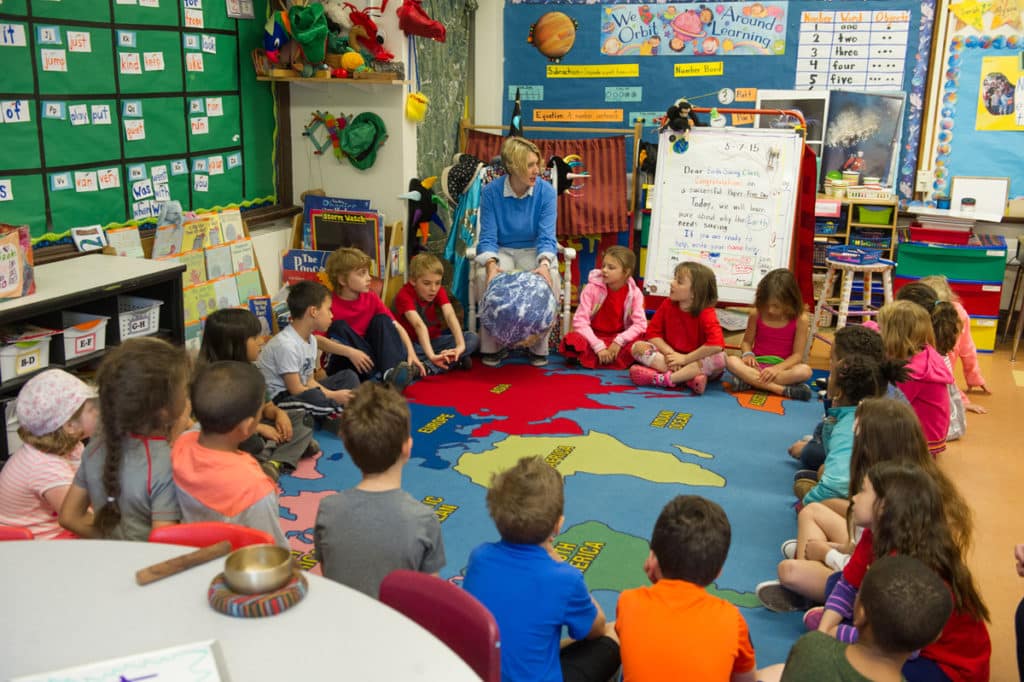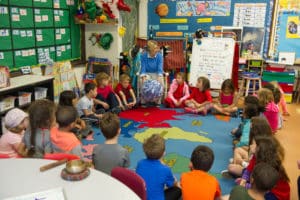
 An adapted excerpt from Parents & Teachers Working Together
An adapted excerpt from Parents & Teachers Working Together
One of the enduring truths about teaching is that to teach children well, we have to know them: what they’re passionate about, what worries them, where they are in their development.
We also have to understand something of their family culture—that world outside the school that has such a huge effect on how well children do in school.
As many teachers know, the U.S. school-age population is becoming increasingly diverse. According to the U.S. Census Bureau, in 2000, 3.4 million U.S. children ages five through seventeen (about one in fifteen) spoke little or no English. And by 2020, nearly half of all U.S. children will be of color; about one in four will be Hispanic. This increasing diversity means that more than ever, we need to be attentive to how students’ family cultures can be very different from the dominant culture of the school.
No doubt this can be hard work. It takes time and effort to learn about unfamiliar cultures. It takes stretching our powers of empathy and creativity to adjust teaching practices to fully include families of different cultures.
But this hard work can also be exhilarating. As teachers, we come into the profession because we find joy in seeing children learn. When we build bridges to families of non-mainstream cultures, we’re making sure that their children, not just the children of mainstream cultures, can do well in school. We’re also opening up exciting new worlds of learning for all children. Just think of how much children can grow socially and academically when our teaching reflects the traditions and contributions of all the cultures in our schools. In the words of parent Bekki Lee, “To have a teacher affirm and embrace all cultures, especially those that our society most under-represents or misrepresents, is incredibly powerful. Teachers shape how our children see the world and each other, and it’s never too early to begin.”
Many resources—books, websites, community groups, and families and children themselves—can suggest practical ways to welcome families from diverse cultures (see end of this article). Rather than adding more such ideas, this article offers instead one overarching goal and one fundamental belief to keep in mind while taking those practical steps to reach out.
The goal in working with parents—all parents, no matter what their culture—is to enable them to support their children’s learning. It sounds simple, but in the process of finding innovative ways to include all the cultures of our students, it’s sometimes easy to lose sight of this goal.
Educator Sonia Nieto observes that many schools believe they’re offering multicultural education when they’re actually implementing “little more than ethnic additives and cultural celebrations.” She writes, “Curiously missing from discussions in most schools that claim to ‘do’ multicultural education are statements having to do with student learning.” Nieto recalls telling a friend about a multicultural education initiative in a nearby school system. The friend’s reservations about the project were evident when she asked, “But are the kids learning?” During a similar discussion, another friend asked impatiently, “But can they do math?” (Sonia Nieto, The Light in Their Eyes, page xvi).
“Are the children learning?” needs to be the question that we continually keep in the forefront as we work with all parents. Activities such as celebrating holidays from various cultures and decorating a bulletin board to reflect diverse cultures are worthwhile. But we need to ask whether such efforts, by themselves, help children learn math, reading, science, cooperation, responsibility, empathy—all the things they’re supposed to learn in school.
In addition to keeping the classroom focus on learning, we can have practices that enable the children’s parents to help them learn. That means making the small but critical everyday efforts to reach out in ways that help parents understand and be part of their child’s classroom. For example, we could look for people at school or in the community to translate letters and other school-to-home communications. Whenever possible, we could invite interpreters to join meetings with families. These efforts can help parents feel heard, welcomed, and comfortable asking questions and voicing opinions about their children’s education.
How we view families from cultures different from our own deeply affects how we work with them. All families have had different sets of experiences. We can best help students learn if we believe their family experiences are neither better nor worse than our own, but simply different.
Literacy professor Victoria Purcell-Gates writes about this “difference” versus “deficit” view of family backgrounds. As teachers know, children come to school with widely varying experiences in reading, writing, and other literacy activities at home. Even English speakers come speaking different dialects. But, Purcell-Gates point out, if the family is poor, undereducated, or speaks a “nonstandard” dialect, we’re more likely to interpret a child’s uniqueness as an inherent deficit or flaw rather than a mere difference in experience.
When we do this, Purcell-Gates says, we risk lowering our expectations for the child and writing the child off as less teachable or even unteachable. By contrast, when we truly believe that all children can learn and that they vary only in their experiences, we’re more likely to maintain high expectations of all children and nonjudgmentally build on the experiences they have had to help them learn at their best. (Lisa Delpit and Joanne Kilgour Dowdy, eds., 2002, The Skin That We Speak, New York: The New Press, pp. 121–139).
The “difference” versus “deficit” view also comes into play in areas beyond language and literacy. Early in her career, Bonnie Baer-Simahk, a teacher of K–6 English language learners in Massachusetts, was surprised to learn that many Southeast Asian students didn’t like to take their completed schoolwork home because their parents would throw it away. “I was so upset, thinking that the message the parents gave their children was that their schoolwork was not valued,” she recalls. “Later I saw that I was quite wrong.” The same parents who never displayed schoolwork welcomed Bonnie into their home to talk about their children’s progress in school, came in to help out whenever invited, and urged Bonnie to tell them if their children weren’t doing good work in school. Clearly, these parents valued their children’s school efforts. Why, then, didn’t they display their children’s schoolwork?
“I suspect it was a combination of things,” says Bonnie. Maybe the parents didn’t understand the significance of the papers or the teacher’s comments on them. Maybe they expected their children to work hard and thought that positive efforts didn’t require any special acknowledgment. Whatever the reason, the point is that the parents’ behavior reflects a difference in experience and norms, not a lack of concern for their children.
A further point is that once we recognize differences, we need to respect them. Children from diverse cultures and their families can succeed in American schools without surrendering the customs of their home cultures. For example, Bonnie didn’t try to change the Southeast Asian families’ customs around taking home and displaying school- work. She simply accepted that these families had other ways of showing pride in educational effort.
Whatever we’re trying to understand about students from other cultures, we can teach best when we hold fast to the “difference, not deficit” mentality. In doing so, we’re more likely to see intelligence, talent, and caring, even if these are expressed in ways that we’re not used to. We can then build on these assets to teach the children what they need to learn in school.
For more about working with families, see our book, Parents & Teachers Working Together.